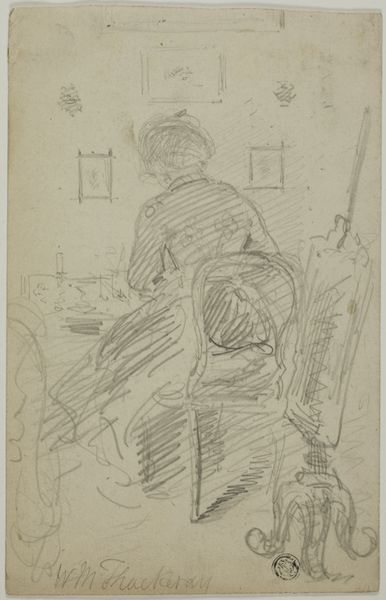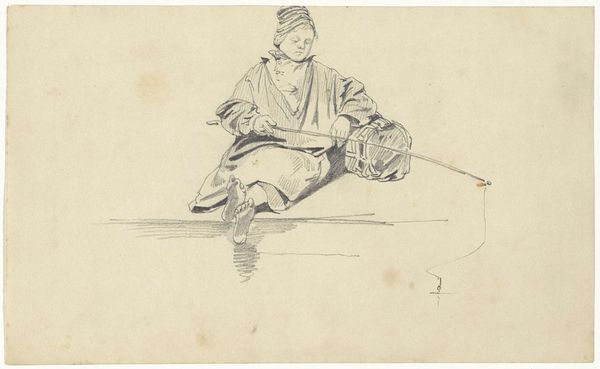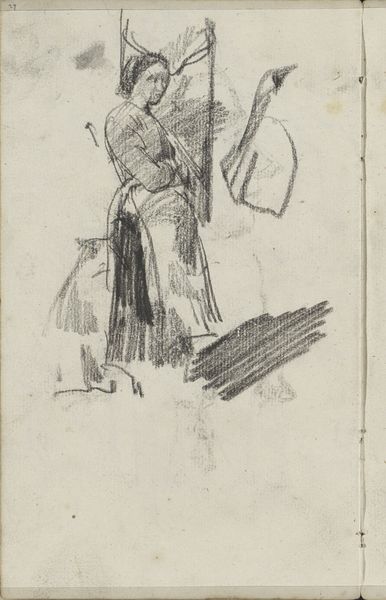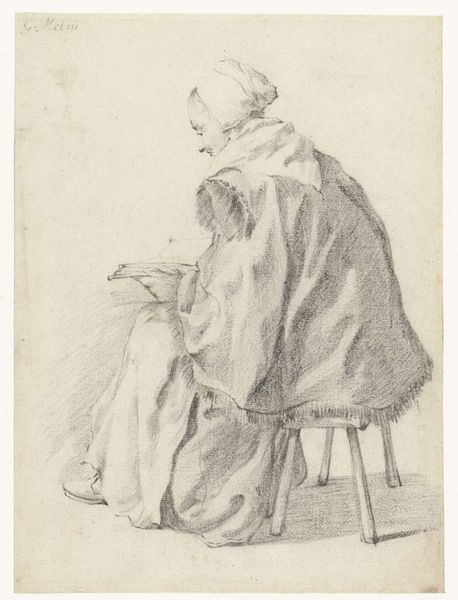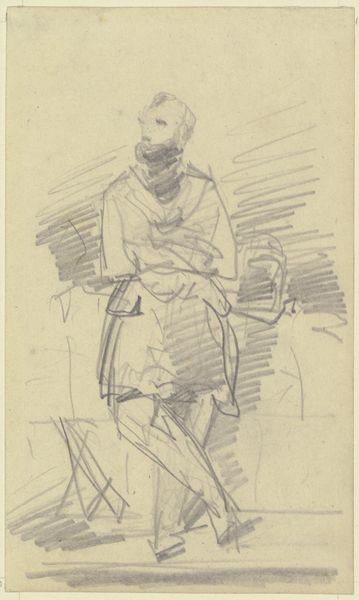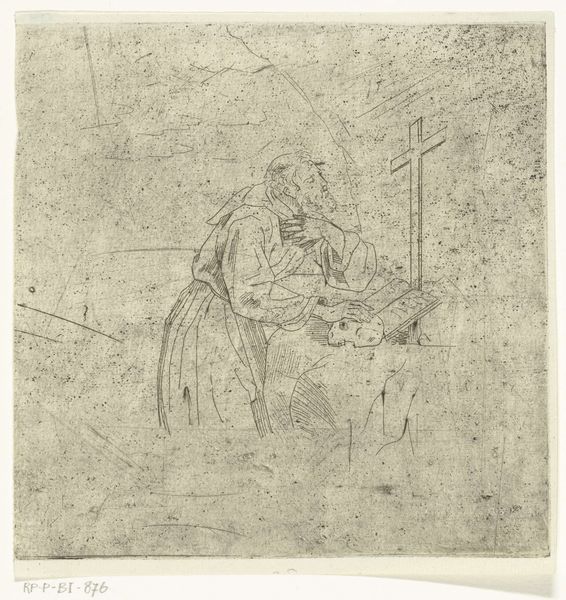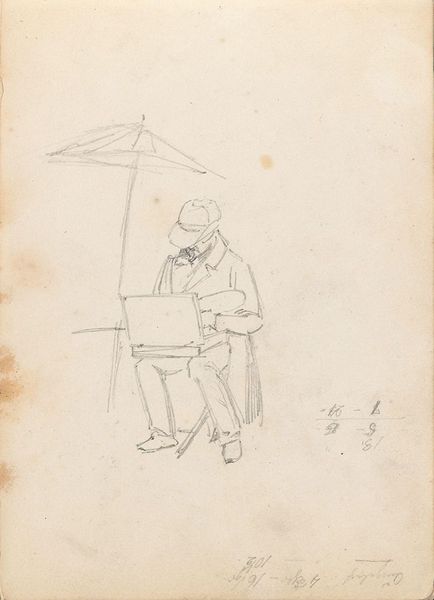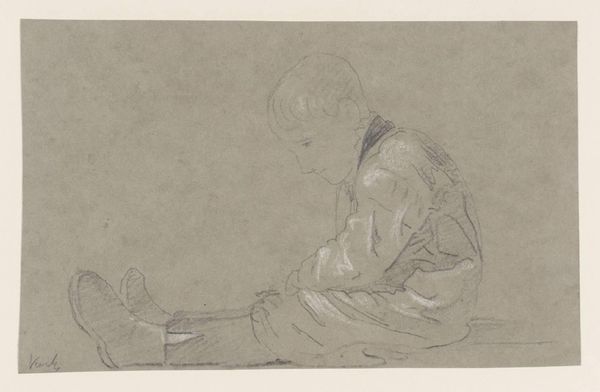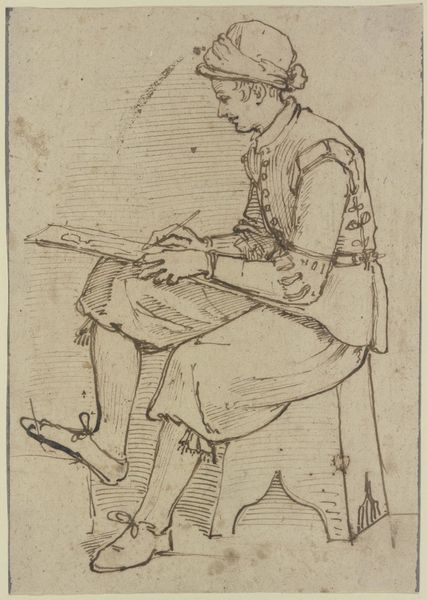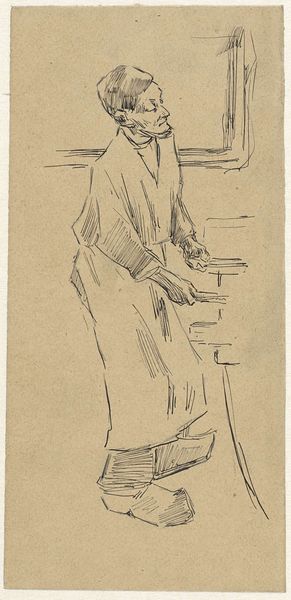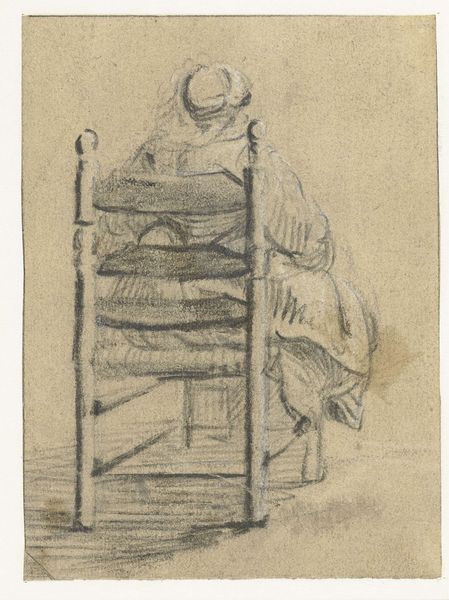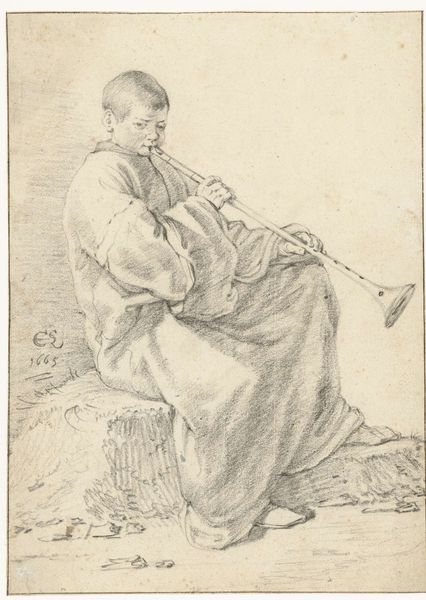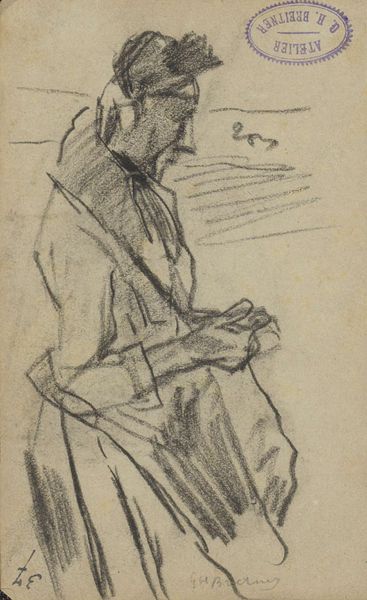
drawing, pencil
#
portrait
#
drawing
#
dutch-golden-age
#
pencil sketch
#
figuration
#
pencil
#
realism
Dimensions: height 366 mm, width 260 mm
Copyright: Rijks Museum: Open Domain
Curator: Here at the Rijksmuseum, we're standing before Carel Adolph Lion Cachet's "Mandenmaker," which roughly translates to "Basket Maker." This drawing, crafted with pencil, offers an intimate glimpse into a craftsman's life, dating from around 1874 to 1945. Editor: The immediate impression is one of quiet dignity. It's stark, almost unfinished in its execution, yet the man's presence is powerfully felt. There is something very compelling in its simplicity, although the pencil rendering gives the work a somber atmosphere. Curator: Indeed. It reflects the artistic currents of the period, deeply influenced by a growing interest in portraying everyday life and the working class with respect and without romanticization. This piece would have been created within a rapidly changing socio-political landscape. The depiction is important in portraying ordinary members of the dutch populace, at a time when art's purpose was being questioned and expanded. Editor: I find the subject's averted gaze quite telling. It resists a direct confrontation, inviting us instead to contemplate his labor and the cultural value, or lack thereof, placed on this traditional craft. What socioeconomic factors contributed to Lion Cachet choosing to memorialize him this way? The figure isn’t heroicized, rather there’s a plainness to him. Curator: I agree, his intent was not to exaggerate, rather, he portrayed the Basket Maker as he saw him. Pencil as the sole medium amplifies that raw honesty, speaking to the realities faced by many during that period. The drawing offers a critical dialogue regarding societal inequalities. Editor: And it invites us to examine our own relationship to labor and craftsmanship in an increasingly automated world. This quietly radical pencil sketch manages to provoke crucial questions regarding economic justice and cultural sustainability. Curator: This is more than just a portrait of a basket maker. The image makes him the face of many workers, facing many of the same challenges in that era, so well visualized with such subtle pencil shading. It speaks to the very core of what it means to create, to subsist, and to be seen. Editor: Absolutely, and it’s our responsibility to see him, his work, and what he represents, within the complexities of past and present socioeconomic structures. Thank you for providing the lens, once again, through which to explore his meaning more critically.
Comments
No comments
Be the first to comment and join the conversation on the ultimate creative platform.
